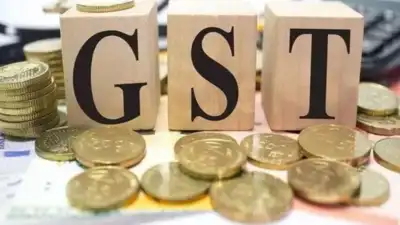
The proposed revamp of the Goods and Services Tax (GST) into a two-tier structure with lower levies on household goods could lift consumption by Rs 1.98 lakh crore but also result in an estimated yearly revenue loss of Rs 85,000 crore, SBI Research said in a report released Tuesday.The Centre has put forward a ‘next-gen GST’ framework with just two rates — 5 per cent for merit goods and 18 per cent for standard items — along with a 40 per cent tax on 5–7 select demerit goods such as pan masala and tobacco, PTI reported.SBI Research noted that the effective weighted average GST rate has already fallen from 14.4 per cent at launch in 2017 to 11.6 per cent by September 2019, and could now slide further to 9.5 per cent if the new structure is adopted.According to the report, the shift would deliver a 0.6 per cent boost to GDP through higher consumption, without stoking inflation, as mass-use items like food and clothing would see tax rates fall from 12 per cent to 5 per cent.Consumer price index (CPI) inflation is projected to moderate by 20–25 basis points, with food inflation easing by 10–15 basis points after factoring in a 60 per cent pass-through of lower GST. Rationalisation of service rates could add another 5–10 basis point reduction in inflation for other goods and services, with a 25 per cent pass-through assumed.“The GST 2.0 regime, while also involving an average revenue loss of Rs 85,000 crore, is estimated to have boosted consumption by Rs 1.98 lakh crore,” SBI Research said. For the current fiscal, the report pegs revenue loss at Rs 45,000 crore, assuming the new rates are rolled out from October.Factoring in the income tax cuts announced in the Union Budget, SBI Research estimated the combined effect on household spending at Rs 5.31 lakh crore, translating into about 1.6 per cent of GDP.The Centre’s proposal is set to be examined by a panel of state finance ministers on Wednesday and Thursday before being placed before the GST Council next month.At present, GST 1.0 operates with four rate slabs — 5, 12, 18 and 28 per cent — plus special rates of 3 per cent on gold, silver, diamonds and jewellery, 1.5 per cent on cut and polished diamonds, and 0.25 per cent on rough diamonds. A compensation cess is also levied on items such as tobacco products, aerated drinks and motor vehicles.Announcing the plan during his 79th Independence Day address on August 15, Prime Minister Narendra Modi called GST 2.0 a “next-generation reform,” and said the new rate rationalisation would be implemented by Diwali.










